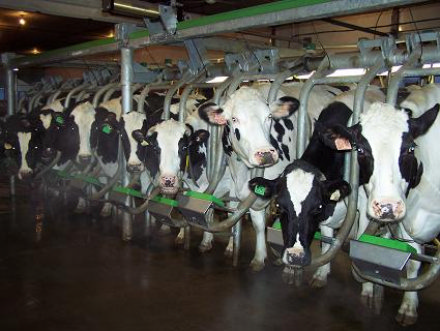
Agricultural News
Mitloehner Slams Research Blaming Cattle for Excess Methane Emissions
Thu, 04 Sep 2014 16:04:19 CDT

This week on the Radio Oklahoma Network, Dr. Frank Mitloehner of the University of California Davis has talked about the beef industry sustainability, green house gas emissions and its carbon footprint. A study came out earlier this year that declared beef industry the worst of all animal meat proteins when it comes to green house gas emissions in citing old science. Mitloehner said its this type of study that the beef industry needs to be aggressive with as far as pushing back and letting the public know its not true.
He its a fact that ruminant animals by nature generate the most green house gases.
"Because, they have a large fermentation vat inside which is the rumen and that's a beautiful thing, because it allows us to use something that we can't digest directly which is cellulose and make it into protein," Mitloehner said.
As a byproduct you also get methane emissions that are belched out largely by cattle. Because pigs and poultry are not ruminants, they don't do that. Mitloehner said that means ruminant animals like cattle and sheep production is higher in the carbon footprint than the other livestock species.
Radio Oklahoma Ag Network Farm News Director Ron Hays caught up with Dr. Mitloehner recently at his UC Davis office. You can listen to the third part of this series by Clicking on the LISTEN BAR below.
Mitloehner said the numbers cited in this research paper were far off and have been heavily criticized. He is not concerned that a single scientist in the world comes up with the study like that and published it. He is much more concerned who published it, because in his opinion this paper should have never passed peer review.
Mitloehner said the US has a tremendous story to tell. In looking at the efficency of the dairy business the US is incredible. The average cow in the US produces approximately 20 - thousand pounds of milk per year. The average cow in Mexico produces four - thousand pounds, meaning you need five animals in Mexico to produce the same amount of milk as one cow in the US. Cows in India produce on average one - thousand pounds of milk annually. So it takes 20 cows in India to produce the same amount as milk as one cow in the United States.
"Think about the different amounts of water these animals drink, feed they eat, manure they excrete to produce a given amount of food," Mitloehner said. "Because of this issue of efficiency we are by far here in the United States the world wide champions in efficiency and that means we have the lowest environmental foot print per unit of production."
Click Here to listen or read part one of this series with Dr. Frank Mitloehner addressing green house gas emmissions of livestock.
Click Here to listen or read part two of this series with Dr. Frank Mitloehner addressing the myth of Meatless Mondays.
The Beef Buzz is a regular feature heard on radio stations around the region on the Radio Oklahoma Network- but is also a regular audio feature found on this website as well. Click on the LISTEN BAR below for today's show- and check out our archives for older Beef Buzz shows covering the gamut of the beef cattle industry today.
WebReadyTM Powered by WireReady® NSI
Top Agricultural News
More Headlines...



















